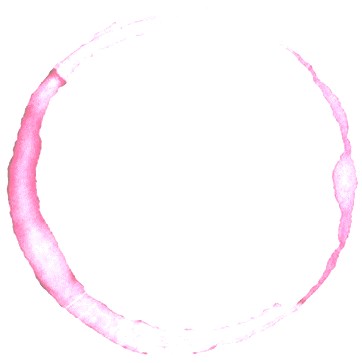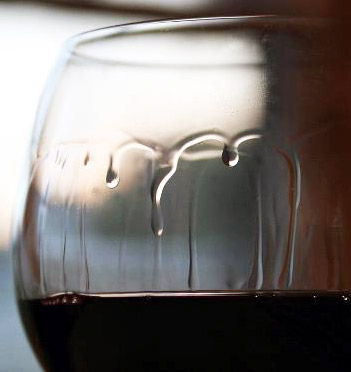
< Previous / Next >
 |
Article Index < Previous / Next > |

Body, Texture, and Finish
A gentleman on the Discovery Channel was discussing the concept of body, texture, and finish. He spoke with unparalleled passion for his craft and stressed the finer nuances of detail that make both first impressions and leave lasting memories with every one of his customers. He also happened to be the paint shop manager at Ferrari. Aside from the sudden urge to own an exotic car (my wife would never speak to me again), I couldn’t help but draw a parallel to my passion for fine wine.
Emile Peynaud, the forefather of modern oenology once
said, “There can be no vocabulary of tasting unless wines have complex
qualities worthy of comment.”
To uphold a certain degree of perspective (via an unknown author) "The
drink serves little more than to quench one’s thirst or as a mechanism to
wash down a swallow of food."
The vast majority of people drink what they like, when
they like it, and put little thought into the process outside of those
parameters. Ice-cold water is always popular - and certainly failsafe, soft
drinks are still too common, while unsweetened iced-tea might be a newfound
preference; the options are endless. For those interested however, there is
a more productive angle to consider. Meal enhancement is how I view the
subject. Of course the health conscious and dietary types might advocate
that fluids are best consumed after the meal and not during. The thought of
actually enjoying a glass of wine with the meal appears to be an
afterthought here in North America. I also fear that we read between the
lines about intimidation via the need for ‘proper pairings’ with options to
either combine or contrast flavour intensities – at times perhaps an
amalgamation of both.
There are certainly a few no-no’s in terms of food and wine combinations
(read
Pairing Tips and Tricks for a detailed summary), but in general a few
basic guidelines will allow for an enhanced dining experience. Thinking
beyond the obvious descriptors such as colour and fruit, three additional
factors to consider when faced with selecting ‘the right’ bottle are its
body, texture, and finish. The trio will always play second fiddle to more
familiar terminology relating to aroma and taste. They also tend to be less
obvious in the flurry of adjectives that adorn the back label of the bottle.
 Assuming
that you are not the person pouring the wine, body is first noticed in the
tears that stream down the sides of the glass and then again by the weight
or fullness of the wine in your mouth. The tears (or legs) reflect the
percent alcohol by volume and relative sweetness of a given wine. A higher
degree of alcohol will produce heavier tears that flow quite slowly. These
wines also have a greater perceived mouth-feel or body, which until recently
was the winning recipe and ‘new-world’ winemaking push. Of course, there is
a place for everything and it is critically important to note that a
full-bodied wine, while tantalizing to taste, is almost certain to overpower
lighter-fare foods. It is better to reserve these big wines to serve
alongside equally rich and high protein dishes.
Assuming
that you are not the person pouring the wine, body is first noticed in the
tears that stream down the sides of the glass and then again by the weight
or fullness of the wine in your mouth. The tears (or legs) reflect the
percent alcohol by volume and relative sweetness of a given wine. A higher
degree of alcohol will produce heavier tears that flow quite slowly. These
wines also have a greater perceived mouth-feel or body, which until recently
was the winning recipe and ‘new-world’ winemaking push. Of course, there is
a place for everything and it is critically important to note that a
full-bodied wine, while tantalizing to taste, is almost certain to overpower
lighter-fare foods. It is better to reserve these big wines to serve
alongside equally rich and high protein dishes.
The impression of texture spills over from a wine’s body and can take on
many forms including effervescence (sparkling wine and frizzante style),
viscosity or lack of (fortified and dessert vs. table wine), and tannin
structure. Consider texture when pairing with food styles: a rich
cream-based dish paired with wines that exhibit the same character i.e. a
buttery Chardonnay is likely to be too much of a good thing. A better option
might be to cut through the weight of the dish with a crisp, clean
mineral-based wine; think creamy pasta with Pinot Grigio or even a flute of
sparkling wine. Likewise, the delicacy of Pinot Noir is lost when we pair it
with a dish that is too rich or spicy. In this case, consider a bolder wine
such as those which are Syrah, Cabernet Sauvignon, or Nebbiolo based while
saving lighter bodied wines like Pinot and Gamay for flavours such as
salmon, pork or duck.
The overall quality of a given wine is indicated not only by its aroma and
taste profile, but also by the length of its finish. Does the wine leave a
lasting impression? One that fades immediately is said have little substance
while those that linger on the palate represent a higher quality product and
one with the potential to improve with age. Look for the word complexity in
write-ups and in critics' reviews.
A wine that creates a lasting pause in the conversation is a finer example.
The longer the pause, the greater the wine - in my opinion.
| return to the Article Index |
Tyler Philp is a member of the Wine Writers' Circle of Canada Please direct inquires for writing services to: info@tylerphilp.com |
| Copyright © 2013 Tyler Philp
prior permission required for duplication of material |